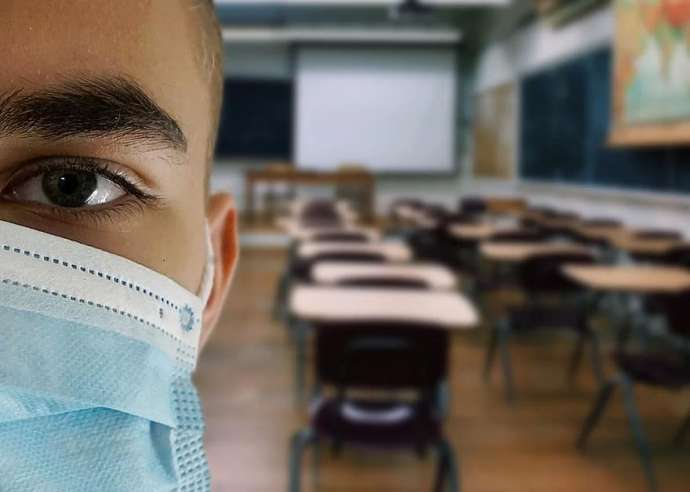STA, 1 September 2020 - For almost 191,000 primary and secondary school students in Slovenia, and their almost 18,000 teachers, the new school year will start on Tuesday the same way the previous school year ended: in-class but with many precautions to prevent the spread of coronavirus, including the wearing of face masks in common areas.
It came as a relief for many parents last week when the government decided that the school year should start in-class rather than remotely, even if the number of new coronavirus cases remains fairly high.
Students will not have to wear masks in class either, but the National Institute of Public Health has recommended that students of all ages wear masks when mixing in common areas, an upgrade of the earlier recommendation that only students 12 and older wear masks.
Schools are advised to follow a number of other precautions, including regular use of hand sanitizer, frequent hand washing, ventilation of classrooms, and keeping a safe distance whenever possible.
To what extent individual schools can follow these recommendations depends largely on school size and architecture. Large schools, for example, can simply not do the recommended distances in classrooms because there are too many children per class, a recommendation that is easier to follow for smaller schools with fewer students.
Education Minister Simona Kustec has said schools should follow the recommendations to the best of their abilities, but stressed that each school should use discretion in adapting the recommendations to the situation on the ground.
"Schools have my full confidence that they will do their best both in prevention and in terms of the teaching process," she has told the STA.
The overarching aim is to conduct as much of the teaching process normally, which means that if a student is confirmed to have coronavirus, the entire class is quarantined while the rest of the school continues instruction in-class.
The decision whether to step up precautionary measures or close schools will depend on the statistics: the daily and weekly number of infections, and the demographic profile of the infected persons, according to Kustec.
Quarantined students will be taught remotely, and the school system is seen as well prepared even if schools should have to close again like they did in spring.
Arnes, a public body which provides internet access to schools and other tools for remote teaching, has upgraded its infrastructure since the first wave of the epidemic.
Using additional state funding, the organisation has increased the capacity of its entire network and upgraded tools such as online classrooms and videoconferencing.
There is also money to buy up to 4,000 computers for students and teachers who do not have their own devices, and during the summer holiday dozens of online courses were organised to teach teachers how to use online tools in class and remotely.
As school starts, experts warn kids can become major vectors of infection
STA, 1 September 2020 - Children have not been considered a major factor in the spread of coronavirus, and they rarely develop severe symptoms. As school starts in-class for all students in Slovenia, experts warn that there is potential for children to not only spread coronavirus but become primary sources of infection in the family.
Mateja Logar, an infectologist at the UKC Ljubljana's clinic for communicable diseases, said on Tuesday that studies conducted after schools started to reopen in late spring shed new light on the role of children in the spread of coronavirus.
While children had initially not been considered a major source of infections, more recent studies have shown that older children and teenagers are much more likely to spread the disease.
"We have to realise that it is possible children develop only mild symptoms but infect other family members," she said.
The latest findings are probably a result of the fact that schools closed around the world when coronavirus first hit, which is why children were not a major factor in the spread.
But as schools reopened more data and more studies poured in showing that "children do get sick as well, it is only that they have different symptoms than adults."
The younger children are, the less specific their symptoms. While the most common symptoms in adults are fever and cough, children tend to develop digestive problems such as diarrhoea or vomiting.
Under the current guidelines for schools, children are not required to wear masks in class but have to put them on while in common areas. Social distancing, frequent hand washing, use of hand sanitizer and ventilation of classrooms is advised.
Logar said it was important that these guidelines be followed as much as possible, in particular since coronavirus spreads much more easily indoor than outdoors.
The latest statistics on coronavirus and Slovenia, and the latest police news on red, green and yellow list countries. All our stories on coronavirus and Slovenia. Can I transit Slovenia? Find out from the police...






